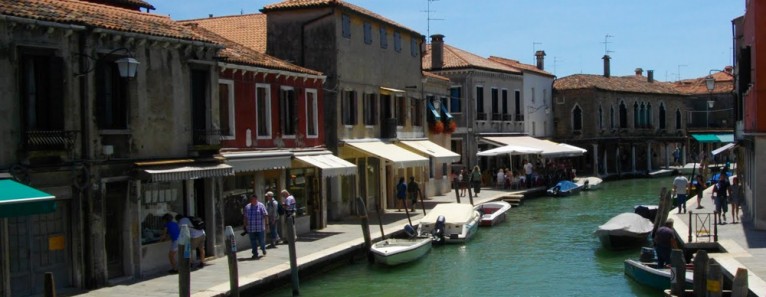
Murano Island
-
LOCATION: Murano Island
Famous all over the world for the glass-making art, Murano Island owes its secular prosperity to a 1291 decree that ruled that all glass factories (where fires could easily be started thus jeopardizing Venetians’ homes) would have to be moved to this island. The Murano island, consisting of five main islets divided by a central canal known as Grand Canal, looks like Venice in miniature. The Canal is overlooked by noble palazzi that evoke the character of the island which soon became a holiday resort for the patricians of Venice. Unfortunately, little remains of the atmosphere that must have reigned in the past and Murano has been completely absorbed by the tourist industry. The narrow fondamenta are strewn with shops where you can buy glass souvenirs of any size, but if you are looking for something really original, we recommend that you go straight to the glass factories (most of them face the lagoon). ITINERARY To savour the atmosphere of the Murano island, get off the vaporetto at the first stop, Colonna, and walk along the Fondamenta dei vetrai. Shortly afterwards you will see, on your left, the church of S. Pietro Martire, rebuilt between the 15th and the 16th century. Inside, note a series of masterpieces from churches and convents suppressed by Napoleon (Our Lady of the Assumption and Saints, and the Virgin Mary with Christ Child, Enthroned, with Angels and Saints by Giovanni Bellini, and St. Jerome in the Desert by Paolo Veronese. Go straight and cross Ponte Vivarini on the Grand Canal. Turn right on the FondamentaCavour: Palazzo Giustinian hosts the Museo di Arte Vetraria (museum of the glass-making art) where wonderful Venetian glasses are exhibited in a chronological order, from the 2nd century b. C. to the present day. Today the Museum is further enriched by the collection from Museo Correr. The most valuable item is the Love cup known as Coppa dei BaroThe Islands vier, in deep-blue glass, with enamelled love scenes and portraits of the bride and groom. From the windows of the museum, note the original Palazzo Trevisan. Not far from the museum, at the end of the Fondamenta, note the apse of a beautiful church, the cathedral of SS. Maria e Donato, an excellent example of Venetian-Byzantine art. The apse is surrounded by two orders of full-centre archlets on coupled columns enriched with beautiful capitals. Inside, the mosaic floor of 1140 is impressing (the date is reported on the third span of the nave): the figures of peacocks, eagles and all kinds of animals constitute a huge fantastic bestiary.